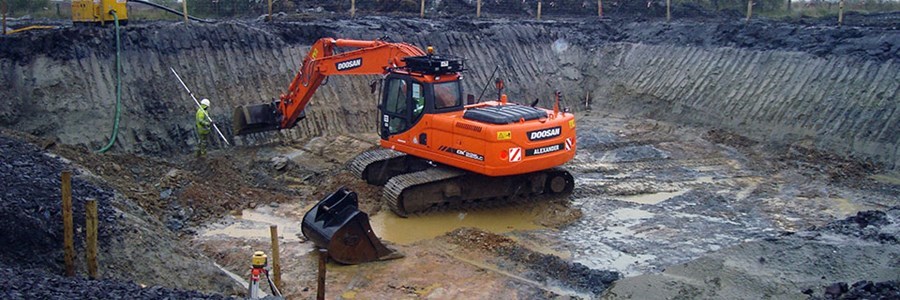
Underground, overground

Contractors must:
Comply with other relevant health and safety requirements.
Ensure that a trained and competent supervisor (Site Safety Supervisor, SMSTS / SSSTS or equivalent) is appointed to manage the works under their control and is available at all times on-site.
Comply with the McLaughlin & Harvey ‘permit-to-dig’ requirements.
Comply with the principles enshrined within HSG47 ‘Avoiding danger from underground services’ and GS6 ‘Avoiding danger from overhead power lines’.
Prior to works commencing, review and confirm site surveys to identify structures, underground services, overhead power lines, unexploded ordinance etc.
Use appropriate CAT & Genny scanning devices to verify the position of all services already noted on service drawings provided and to identify others that may not already have been identified. Such devices must be calibrated and in date. Users of such equipment will be required to provide evidence of their competency and training to do so prior to use. Scans must be completed in a grid formation to cover all areas.
Ensure that no mechanical means of excavation is undertaken within 500mm either side of identified buried services. All hand tools must be insulated.
Confirm the nature of the soil including the location of any made up ground to ensure that the most appropriate excavation support is provided and / or the suitable angles of repose are determined.
Adequately protect excavations at edges by means of guardrails, barriers and / or separation barriers or by ensuring they are adequately covered as appropriate. Excavation warning signage must also be provided. The protection of excavations next to public highways / infrastructure is essential. Barriers and fences must be provided to minimum height of 1m with attendant lighting and warning notices. Such measures must be discussed and agreed with the McLaughlin & Harvey site management team.
Ensure all excavations are adequately supported and protected to prevent the risk of falls or unplanned collapse and / or operative, material or vehicles falls into the excavation(s).The methods employed to prevent the collapse of excavations must be clearly detailed in the site specific risk assessments.
Ensure excavation supports are subject to temporary works design and checks.
Clearly justify by risk assessment the reasons for not supporting or otherwise battering back shallow excavations. Note: Specific controls to prevent falls of persons and / or vehicles into excavations are required when excavating to depths greater than 500mm below ground level.
Provide excavations with safe access / egress points (and / or alternative emergency egress points) and ensure no load, vehicle, plant or equipment will be placed near the edge of any excavation where it is likely to cause a collapse of the excavation. No material will be lowered into an excavation if persons are in the excavation. All persons are to immediately report any deterioration in excavation sides.
Provide manholes, gulley pots and telecommunication ducts etc. at ground level with adequate temporary covers prior to the permanent covers being put in place; with steel plates where there is vehicular traffic and with plywood of sufficient strength or other proprietary temporary cover where there is pedestrian traffic. All temporary covers will be fixed securely in place. Chipboard, fibreboard, pallets etc. will not be used as covers.
Provide competent banksmen to assist with movement of plant and equipment in public areas or in any other areas where reversing movements are required.
Note: All reversing manoeuvres should be avoided as far as is reasonably practicable.